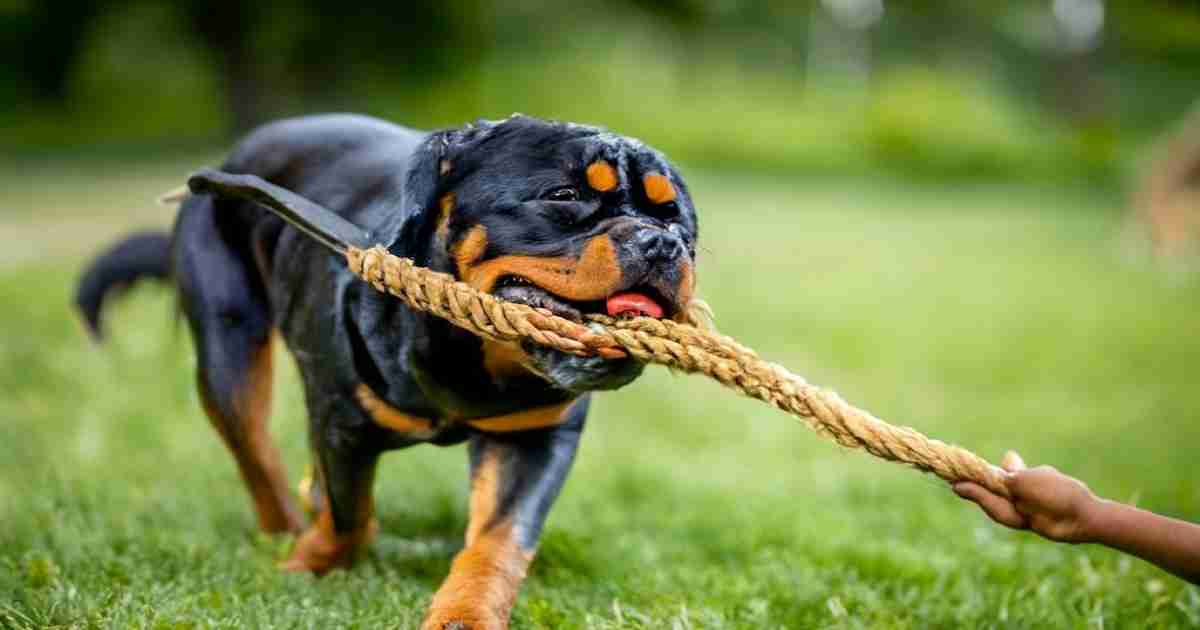Bringing a new puppy home is an exciting time. As the puppy adjusts to their new environment, owners must establish themselves as the dominant leader of the pack. Asserting your dominance over a puppy is a critical part of training and preventing problem behaviors from developing.
Establishing dominance creates respect and shows your new puppy that you are in charge. This enables you to reinforce good manners and obedience from a young age. Dominance must be asserted gradually and gently—not through punishment or force.
This guide will teach you proven techniques used by professional dog trainers to assert your dominance over a new puppy. You’ll learn how to use body language, training, and discipline to become the undisputed leader your puppy looks up to. Let’s get started!
How to Assert Dominance Over a Puppy?
Getting a new puppy is an interesting time, however it additionally comes with challenges. Dogs want proper education and socialization from a young age to develop into nicely behaved dogs.
A key part of that training is establishing yourself as the “alpha” and asserting your dominance in a humane, positive way.
This article is for all new puppy owners looking to understand the dos and don’ts of asserting dominance over their pup.
Puppies are impressionable from an early age. The way you interact with a young puppy affects its behavior and personality as an adult dog.
By asserting your dominance properly, you can instill good manners and curb problem behaviors before they develop.
The goal is to communicate clearly that you are the pack leader and get your puppy to respect your authority. This ensures a glad and harmonious courting constructed on mutual agree with and respect.
Why Establishing Dominance Over a Puppy is Important
There are several important reasons why asserting your dominance over a puppy should begin immediately when bringing them home:
- Puppies naturally follow leaders – Dogs are pack animals wired to follow the strongest member of the group. As the owner, you must establish yourself as the dominant leader.
- Reinforces good behavior from an early age – Dominance enables you to correct unwanted behaviors like nipping, jumping, or ignoring commands. This prevents bad habits from forming.
- Avoids issues like aggression, destruction, disobedience later on – Allowing your puppy to be dominant can lead to much larger issues as they mature if not addressed early.
Dogs crave leadership and need an authority figure to follow. By asserting yourself as your puppy’s leader, you provide the guidance and discipline they inherently seek. This allows for an obedient, well-trained companion who respects you.
Use Calm, Assertive Energy When Interacting
The most important aspect of asserting dominance over a puppy is projecting calm, assertive energy whenever interacting with or training them. Here are some tips:
- Remain calm but firm when giving commands – Speak in a lower, authoritative tone without yelling or becoming emotional.
- Project confidence through body language – Stand tall, make eye contact, use hand signals, and claim personal space.
- Don’t yell or lose patience – If your puppy ignores a command, firmly repeat it or lead them into position. Stay composed.
- Be the one to initiate and end play – Start and stop play sessions on your terms, not when the puppy wants.
- Restrict access to areas like furniture – Don’t allow puppies on beds, couches, or human spots without an invitation.
- Eat before your puppy – Feed yourself and handle your own needs before feeding your puppy to establish dominance.
- Ignore attention-seeking behaviors – Turning your back and ignoring whining or barking teaches pups to be patient and wait for your attention only when calm.
By remaining calm, yet authoritative, your puppy will recognize you as the stable, trustworthy leader to respect and follow. This body language conveys your status as top dog.
Train With Positive Reinforcement
While a firm, dominant approach is necessary, punishment should never be used to assert dominance over a puppy. Here are positive training methods:
- Reward good behavior with treats and praise – Use high-value treats to reward commands, potty training, obedience and remaining calm.
- Use clicker training to mark desired actions – Click the moment your puppy performs the correct behavior then reward with a treat.
- Be consistent with commands and expectations – Use the same word cues and same tone to avoid confusing your puppy.
- Keep training sessions short – Young puppies have short attention spans. Keep sessions to 5-10 mins max.
- Practice commands in various settings – Train at home, outdoors, around distractions to proof commands everywhere.
- End sessions on a good note – If your puppy is repeatedly struggling, go back to an easier skill they can accomplish then reward and end for the day.
While you must be firm and assertive, positive reinforcement builds confidence in your leadership and fosters trust. Harsh corrections can damage that relationship. Manage unwanted behaviors by controlling your puppy’s access and using ignore techniques rather than physical punishment.
Restrict Access to Areas of the Home
One way to establish dominance and authority is by controlling your puppy’s access to areas of the home. Here are some tips:
- Limit access to off-limit areas – Use baby gates to block access to rooms like bedrooms and home offices you want to be puppy-free zones.
- Use crates when you’re away – Confine your puppy to a crate when you’re gone to prevent destructive chewing and potty accidents.
- Only allow access when supervised – Let your puppy explore rooms only when directly supervised. Don’t give them free roam.
- Claim personal space – Don’t allow puppies on your bed or human furniture without an invitation to join.
- Feed scheduled meals in one spot – Designate a feeding area instead of leaving food out to graze.
Controlling your home environment shows your puppy you make the decisions about where they are allowed. Removing access to coveted areas and furniture also prevents inappropriate chewing and potty training setbacks.
Eat First, Pet Last
Simple acts like eating before your puppy and initiating petting/play establish dominance by showing your needs come first.
- Eat meals before feeding puppy – By eating first, you reinforce that the leader gets priority.
- Pet and play only after puppy calms down – Ignore jumping/nipping for attention. Only pet once sitting calmly.
- Initiate training sessions – Start a training/play session on your terms when you are ready, not when the puppy demands.
- Claim the best sleeping spots – Don’t allow puppies to take over the prime real estate like your bed or favorite spot on the couch.
- Go through doorways first – Entering rooms or outside areas before your puppy creates precedence.
- Win at tug and fetch – Allow puppy to “win” sometimes at first. But establish you ultimately decide when play stops.
These small acts continually reinforce the structure that you call the shots and that your puppy must respect your higher rank in the household.
Ignore Attention-Seeking Behaviors
Puppies will try to get your attention through behaviors like whining, barking, nipping, jumping, or bringing you toys. Here’s how to handle this:
- Completely ignore the behavior – No reaction, even scolding, rewards the puppy with attention.
- Stand still and turn your back – This shows the pup you won’t engage until they are calm and polite.
- Leave the room briefly – If needed, calmly step out of the room to remove your attention entirely.
- Reward calm behavior – When your puppy sits or lays down quietly, reward with gentle praise and petting.
- Only give treats when calm – Ask for a “sit” or “down” before giving treats to reinforce obedience.
- Initiate play on your terms – Choose when play starts and ends. Don’t allow nipping or jumping to get your attention.
With consistency, your puppy will learn the only way to get your attention is by being calm and waiting for you to initiate interaction. This develops patience and respect.
Regular Exercise and Training
Giving your puppy positive outlets for their energy and reinforcing your commands prevents unwanted behaviors.
- Exercise puppy daily – Regular walks, play sessions, and off-leash running prevents destructive energy buildup.
- Vary locations and experiences – Socialize your puppy to new places, sounds, and people during exercise.
- Use walks for training – Practice basic commands and manners while on leash during walks.
- Provide interactive toys – Rotate chew toys to relieve boredom and teach what is appropriate.
- Do short training sessions daily – Formal training sessions ensure your puppy doesn’t forget commands.
- Practice commands in real life situations – For example, practice “sit” before feeding or opening doors to reinforce it.
Mentally and physically tiring out your puppy makes them more likely to respect your leadership and less likely to act out. It also strengthens your bond.
Be the One to Initiate Greetings
Greetings offer another opportunity to reinforce your dominant status. Follow these tips:
- Initiate greetings on your return home – Don’t allow puppies to jump on you immediately. Wait for a sit first.
- Ignore excited behavior – If your puppy is jumping or nipping in excitement, turn away and wait until they settle down before engaging.
- Pet only after puppy has calmed down – Require a seated or laying down position before giving affection.
- Keep greetings low key – Avoid overly excited voices and rough petting which can rile up an already stimulated puppy.
- Limit immediate physical affection – Reserve the most stimulating types of affection like belly rubs for after a calm greeting.
- Keep departures boring – No need to hype leaving or make a big fuss. Matter-of-factly exit.
Controlling the intensity of greetings and entrances prevents attention-seeking behaviors from being rewarded. This reiterates your leadership position.
Never Physically Punish Puppy
It’s imperative never to physically punish or become aggressive with a puppy, even while asserting dominance. Here’s why:
- Fearful puppies become afraid of owners – Harsh physical corrections can damage trust and your bond.
- May provoke growling or biting – Physical punishment can cause fearful puppies to bite or become aggressive.
- Often doesn’t address the real issue – Hitting usually doesn’t teach the proper desired behavior.
- Can worsen unwanted behaviors – Harsh punishment can increase anxiety and unwanted reactions.
- Positive reinforcement is more effective – Reward-based training creates trusting, obedient puppies.
While unwanted behaviors must be managed, use ignore techniques rather than physical force. Remove rewards for negative behaviors instead of adding fear or pain which can create much larger issues. Harsh physical punishment has no place in puppy training.
Be Patient and Consistent
Becoming the undisputed leader of your puppy does not happen overnight. Here are some tips:
- Dominance is established over time – Use the techniques daily for consistent leadership.
- Set clear house rules – Decide on rules for areas/items that are off-limits and expectations for behavior. Be consistent.
- Reinforce training daily – Brief, positive training sessions ensure commands stick.
- Manage inevitable frustrations – Accidents, chewing, and disobedience will happen. Stay calm and redirect.
- Be firm but fair – Project strength without anger, impatience or bullying.
With maturity and proper training, your puppy will accept their place in the family beneath you, making for an obedient companion. Avoid expecting too much too soon from a young puppy. Dominance is about leadership, not aggression. With time and benevolent authority, your puppy will thrive under your supervision.
Conclusion
Establishing dominance over your puppy lays the foundation for a well-behaved dog and prevents issues like aggression, anxiety and disobedience down the road. Use non-physical tactics like controlling resources, ignoring attention-seeking behavior and remaining calm but assertive in your leadership style.
While punishing a puppy is never acceptable, neither is letting them be dominant over you. With consistent, benevolent authority, your puppy will accept you as their leader. This enables effective positive reinforcement training to reinforce the behaviors you want.
Being the dominant pack leader takes patience, self-control and consistency. But the payoff is a puppy who respects you and is a pleasure to own for their entire life. Use the techniques in this guide to get your new puppy off on the right paw by showing them their place in the family beneath you.










2 thoughts on “Establishing Leadership: How to Assert Dominance Over a Puppy”